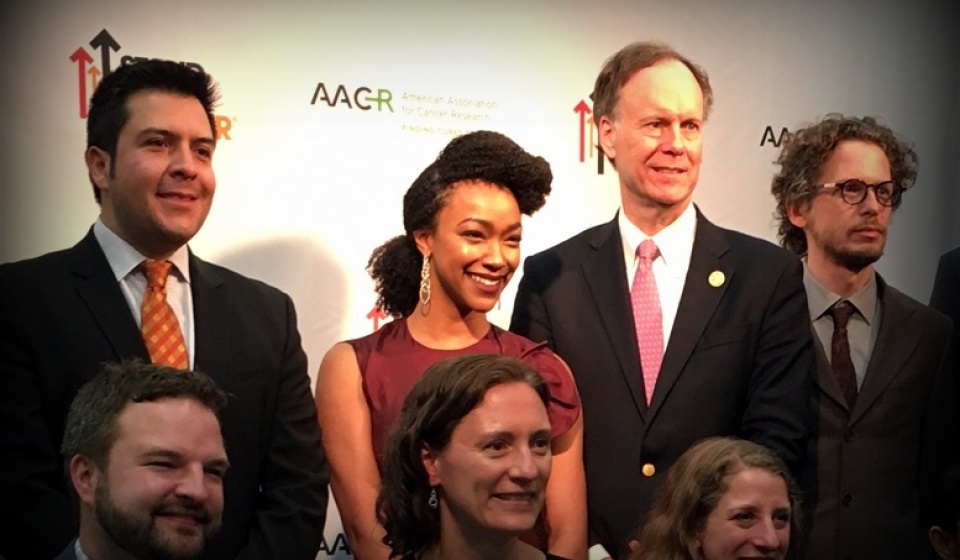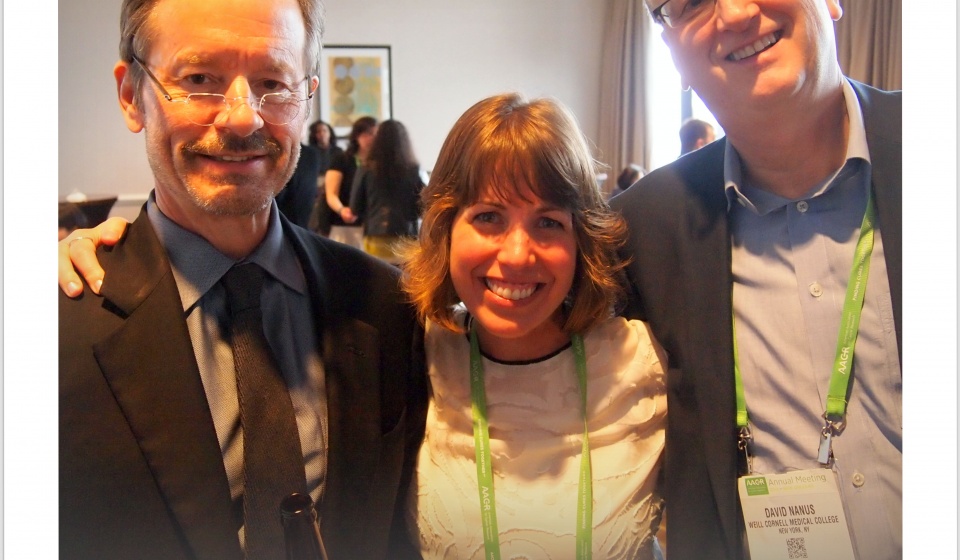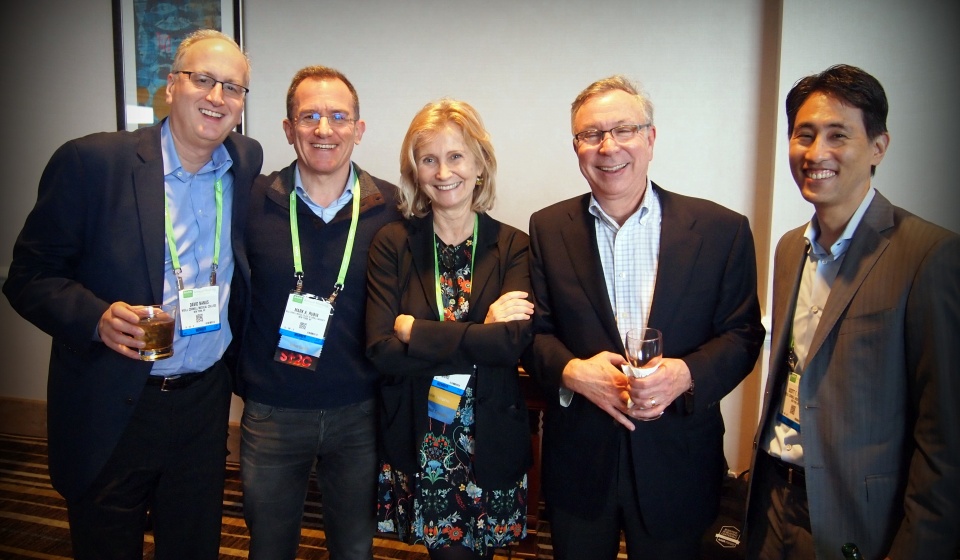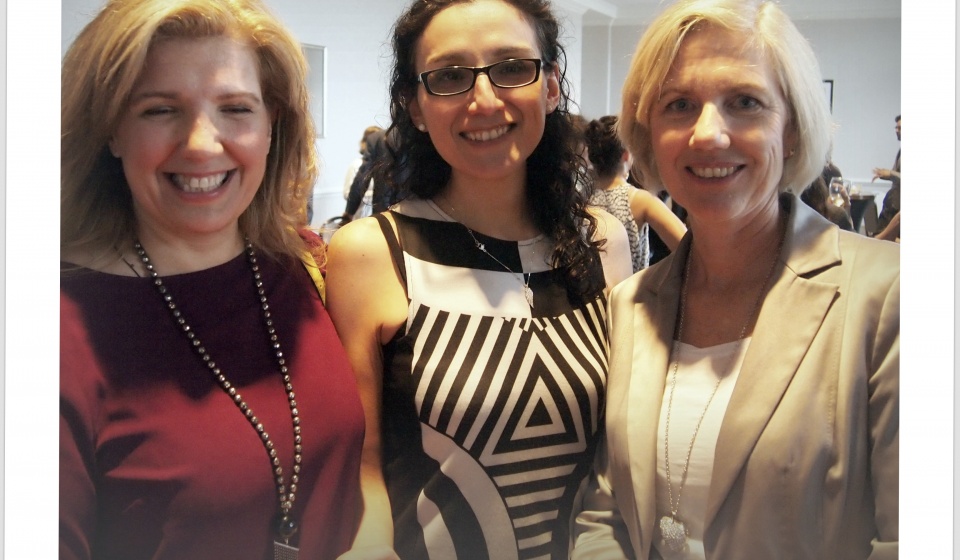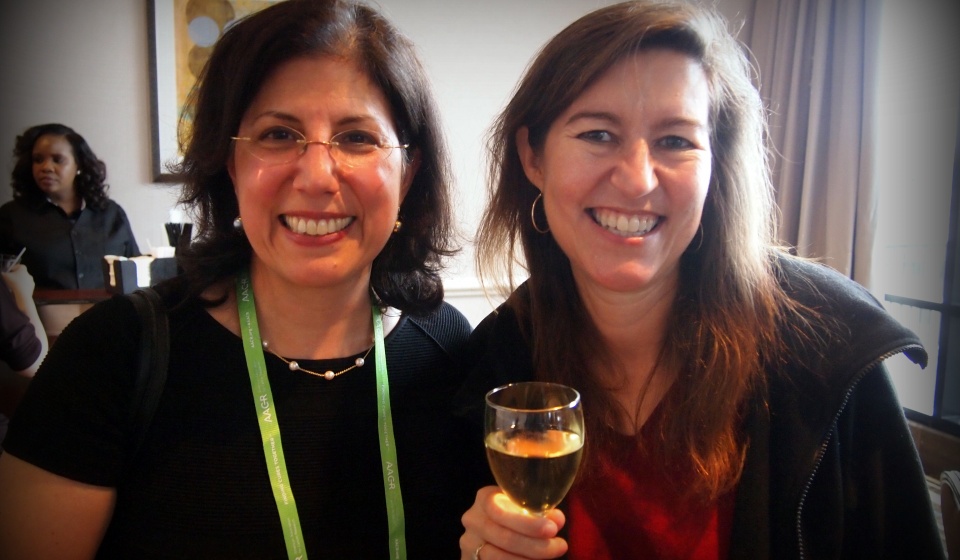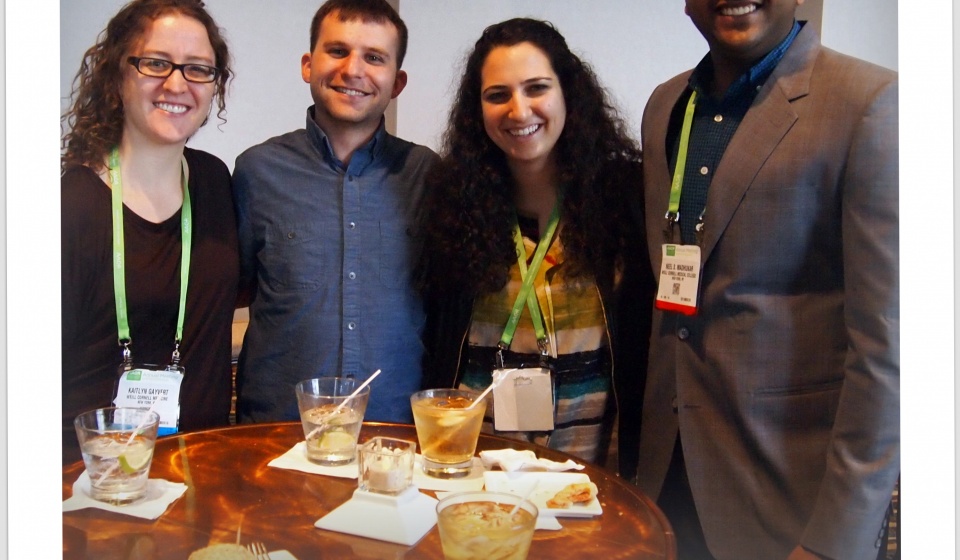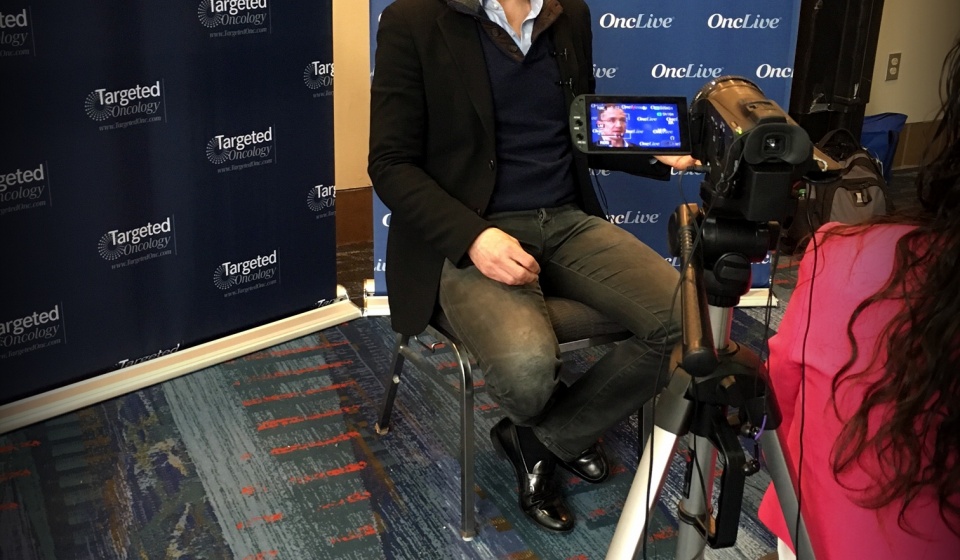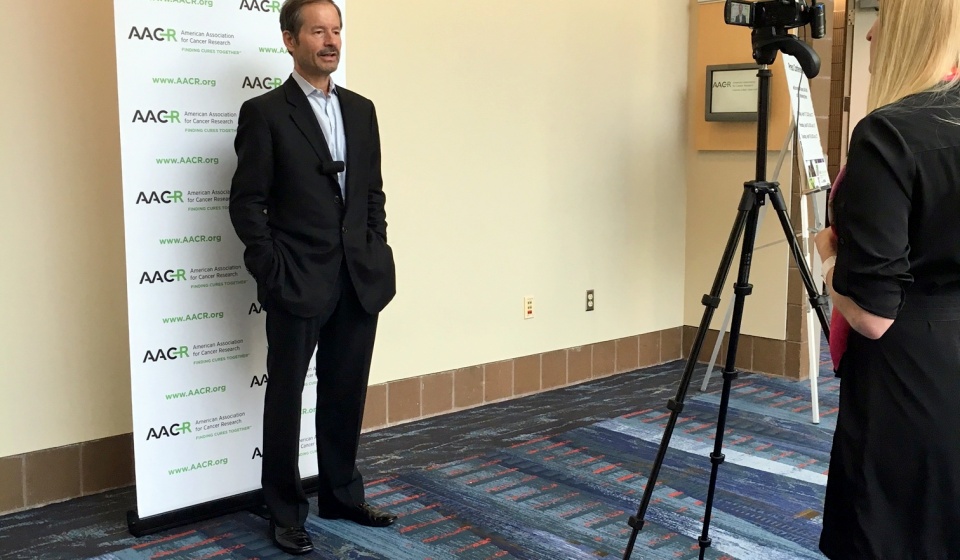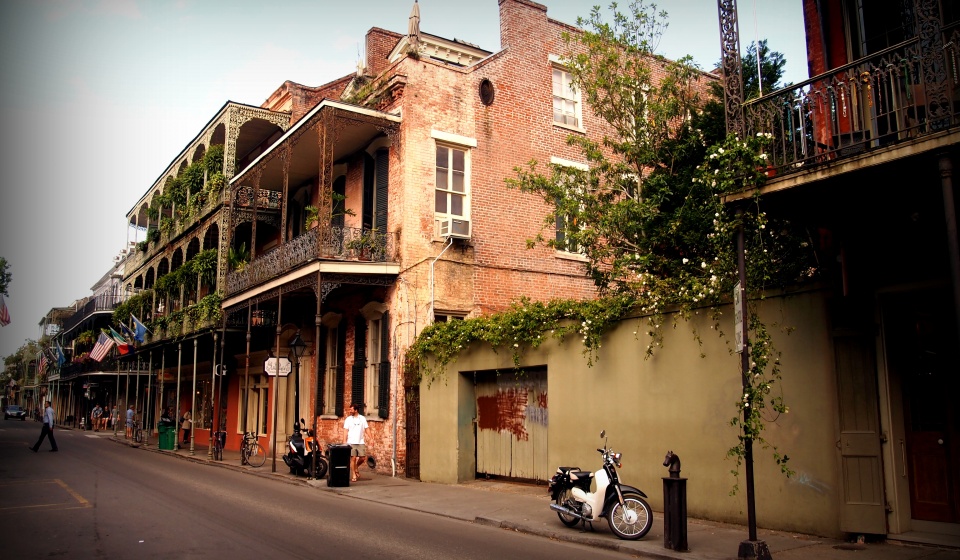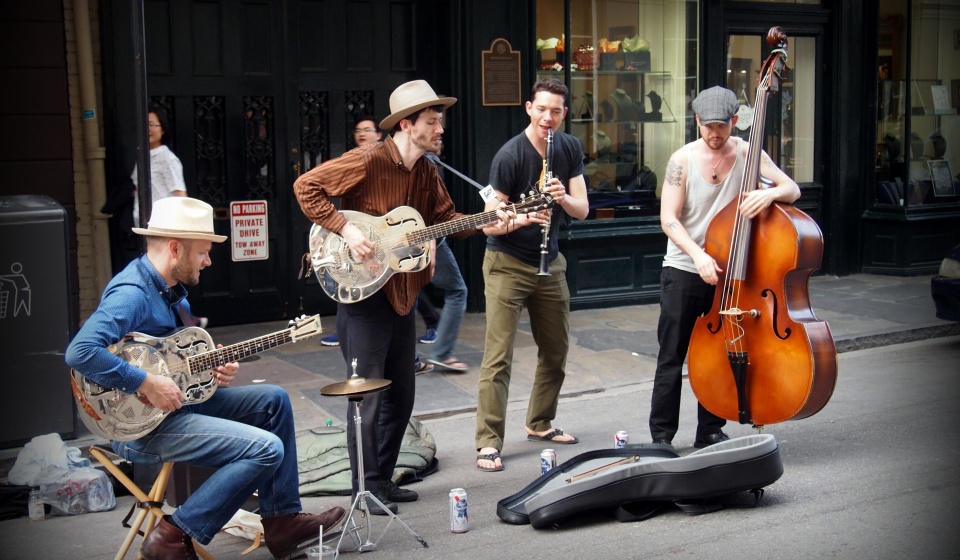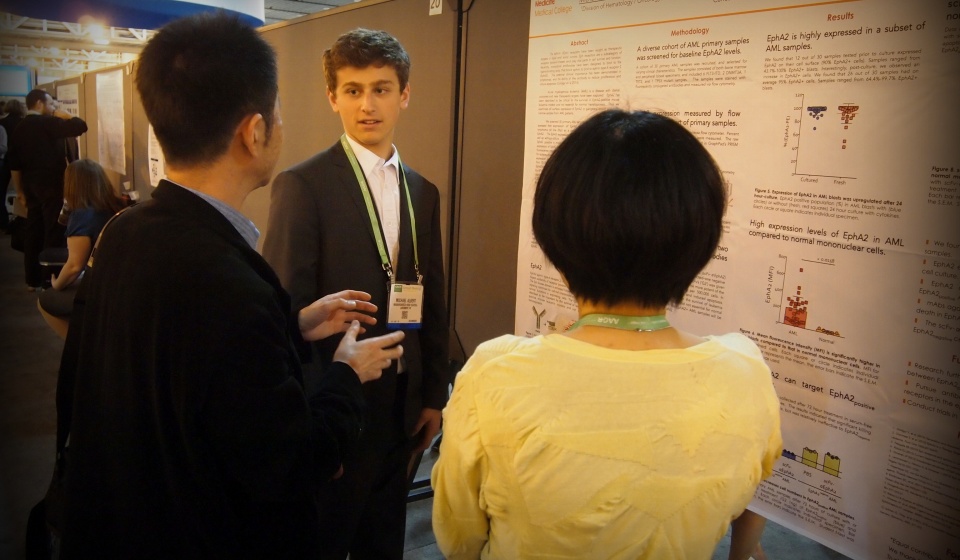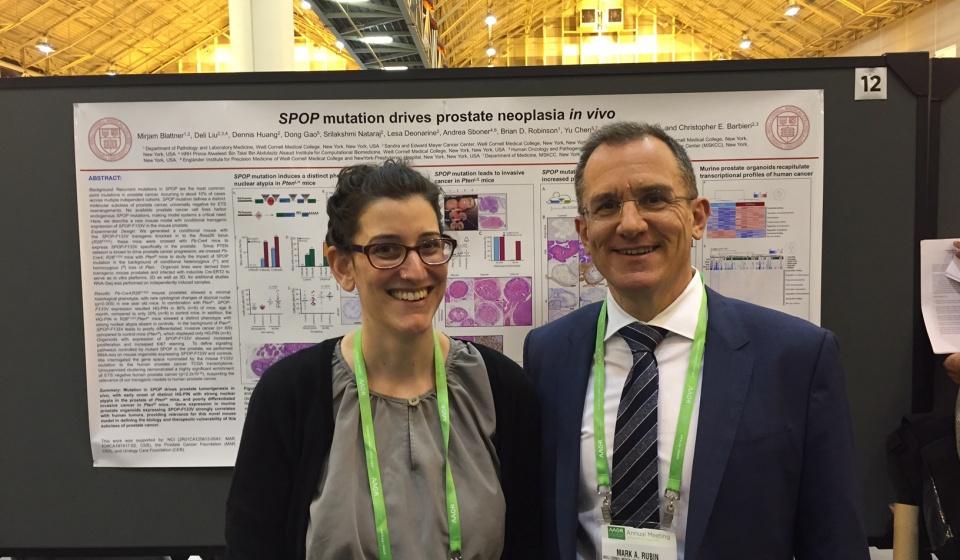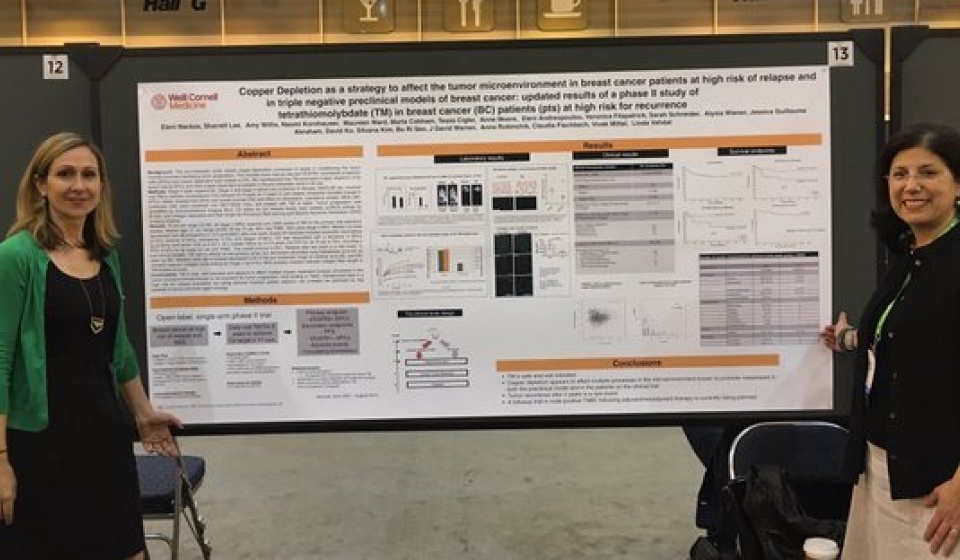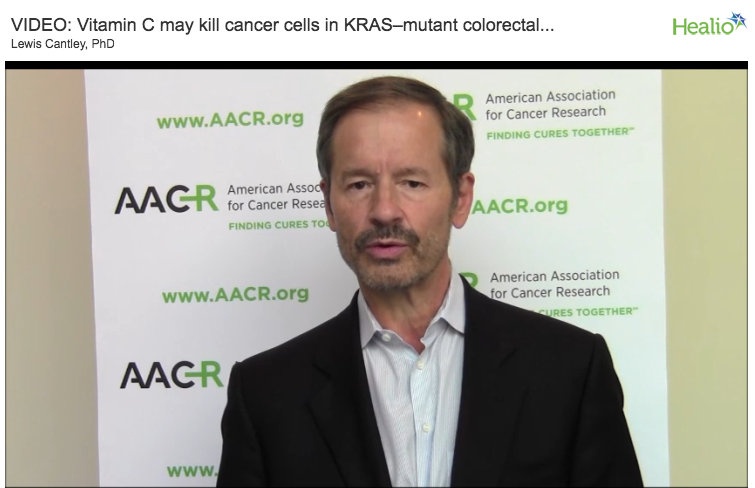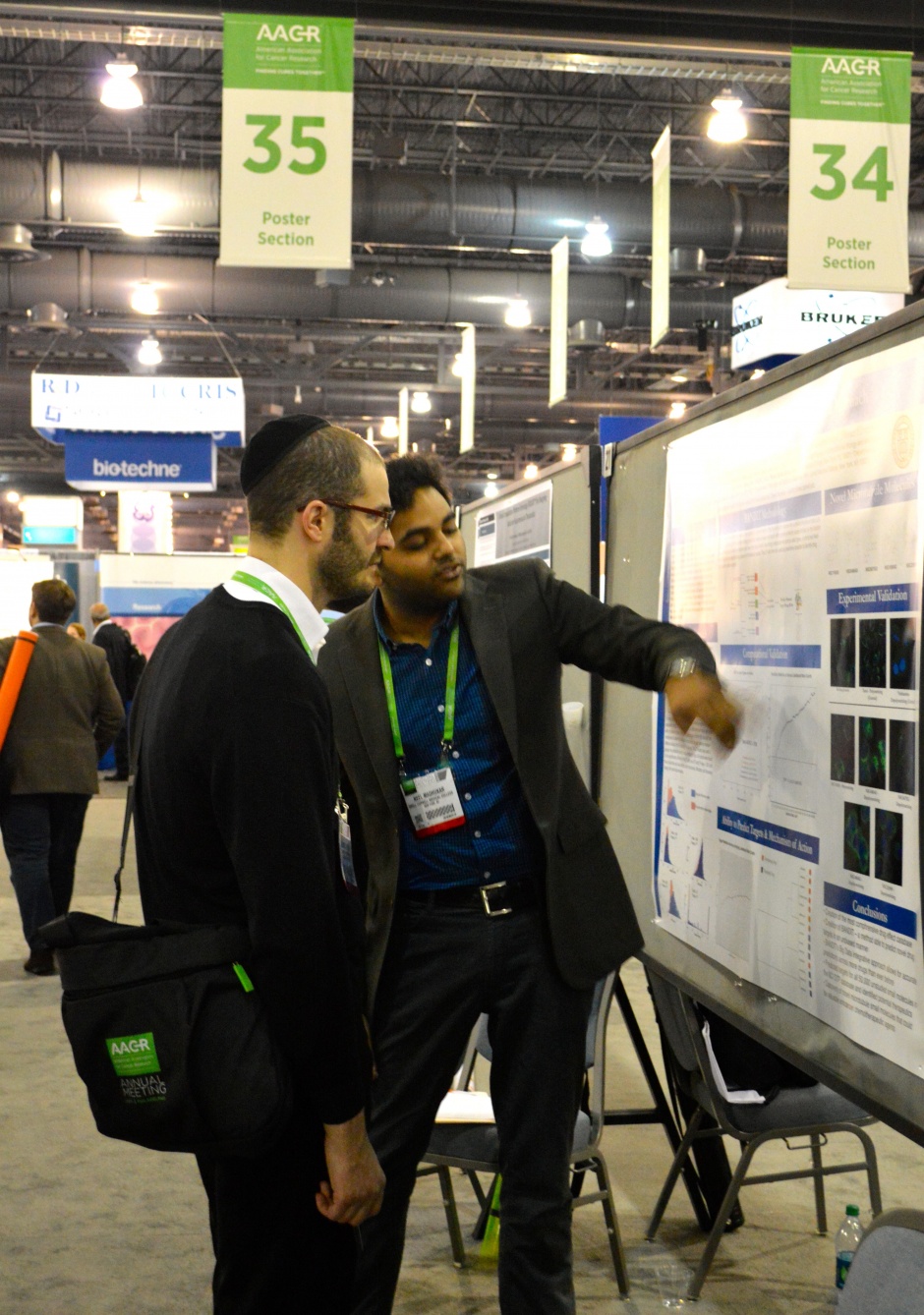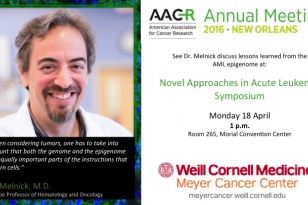Big strides in the Big Easy
From the promise of precision medicine to the intersection of radiation and immunotherapy, more than 100 bench scientists, oncologists and computational biologists from Weill Cornell Medicine presented their work at the annual meeting of the American Association for Cancer Research (AACR), which brought around 20,000 cancer researchers to New Orleans on April 16-20.
Highlights:
Rising stars: Juan Cubillos-Ruiz, Ph.D., and Dan Landau, M.D., Ph.D. were honored at star-studded event featuring Walking Dead actress Sonequa Martin-Green. The pair were two of 10 young investigators nationwide who received $750,000 Innovative Research Grants from Stand Up To Cancer (SU2C), a charitable program established in 2008 by film and media leaders. Matthew G. Vander Heiden, M.D., Ph.D., a former postdoc in the Cantley Lab who is now an associate professor at the Koch Institute for Integrative Cancer Research at Massachusetts Institute of Technology, also received an award. Read more here.
Cranberry compound packs powerful punch: A compound made from cranberries has shown promise in killing several leukemia cell lines and blood samples from acute myelogenous leukemia (AML) patients. And it may provide a safe, natural treatment for dogs stricken with canine lymphoma. The Guzman Lab revealed how A-type proanthocyanidins (A-PACs), a class of compounds found in cranberries, were able to kill patient-derived tumors grafted onto mice as effectively – or, in some cases, more effectively, and with no toxic side effects – than high-dose cytarabine, a standard care drug. Read more here.
Teenager helps ID new target for aggressive leukemia: The youngest member of the Meyer contingent was 17-year-old Michael Albert, who worked with the Guzman Lab to see whether ephrin (Eph) receptors, a subcategory of receptor tyrosine kinases that play vital roles in cell survival and function, might also be good candidates as therapeutic targets for AML. Read more here.
Doing better on behalf of bladder cancer patients: An immunotherapy drug used for triple-negative breast cancer is showing great promise for bladder cancer patients, according to Scott Tagawa, M.D. Presenting the results of a Phase II study of the antibody-drug conjugate (IMMU-132 or sacituzumab govitecan), Tagawa reported that 84 percent of patients with metastatic urothelial cancer were alive at the nearly one-year mark, compared with an average overall survival of 4-9 months in similar patients who received chemotherapy regimens. Read more here.
What the gut? How do the bacteria swimming inside and around our guts change our chances of developing cancer? What effect might they have on the immune system? And what happens when you introduce antibiotics or anti-inflammatory drugs? Studies conducted at Weill Cornell Medicine are exploring these questions in an attempt to better understand the complex workings of the gastrointestinal microbiota and metabolome. Read more here.
Blood cancer drug could provide new hope for lung cancer patients: The lab of Leandro Cerchietti, M.D., revealed early evidence that a BCL6 inhibitor initially studied as a potential B-cell lymphoma treatment might also be effective against hard-to-treat, chemo-resistant non-small cell lung cancers. Read more here.
Englander Institute goes global: As a member of the International Cancer Genome Consortium (ICGC), the Caryl and Israel Englander Institute for Precision Medicine will contribute genomic data to a research effort that is mapping 25,000 different cancer genomes in 50 different tumor types for free use by qualified researchers around the world. On the opening day of AACR16, the consortium announced it will now link this data with clinical information -- including lifestyle, patient history, cancer diagnostic data, and response to and survival following therapies -- across the cancer continuum from pre-neoplastic lesions to metastases. Read more here.
Computer to clinic: A computational tool created by Neel S. Madhukar, a graduate student in the lab of Olivier Elemento, Ph.D, has realized its first clinical application - less than a year after its development. Drug discovery and development company Oncoceutics announced that it is testing a new drug, ONC201, a D2-like dopamine receptor antagoniser, which was identified by confluence of computational modeling (Madhukar's BANDIT system, which was unveiled at AACR15) and clinical studies. Read more here.
Co-conspirators in chemo resistance: The Giannakakou Lab presented research that shed light on how ERG and AR-v7 may serve as co-conspirators when it comes to developing taxane resistance, and how non-invasive “liquid biopsies” that isolate circulating tumor cells and analyze the presence of genetic alterations could be used to determine whether a patient will respond well or show resistance to taxane chemotherapy. She also presented the results of a collaboration with the Elemento Lab about the use of sophisticated computer software analysis to examine large datasets derived from circulating tumor cells from the blood of men with advanced prostate cancer. Read more here.
Exciting element: Linda Vahdat, M.D., and colleagues presented an update on exciting findings debuted at the last AACR Annual Meeting. They found that Tetrathiomolybdate, an anti-angiogenic copper chelator, may prevent tumor recurrence in patients with breast cancer by causing copper depletion. After 5.9 years of follow-up, researchers found a progression-free survival of 72% in all patients, and 90% in stage II/III patients. Read more here.
Big talks: People packed into a major metabolism symposium on Monday to hear Meyer director Lewis Cantley review some of his seminal work in cancer metabolism and the PI3K pathway. Misha Beltran addressed hundreds of attendees at a major symposium about the latest research in treatment-resistant prostate cancers, and Ari Melnick also shared lessons learned from the AML epigenome at a special symposium. It was standing-room only at an immuno-radiotherapy symposium chaired by Sandra Demaria, and David Lyden helped close out the event at a major symposium about pre-metastatic niches and exosomes.
Meyer director Lewis Cantley, Ph.D., spoke to HemOnc Today about the potential use of Vitamin C as a therapy for KRAS-mutant colorectal cancers in this video.
Mark A. Rubin, M.D., speaks to OncLive about the advantages of whole-exome sequencing and how it compares with targeted sequencing.



